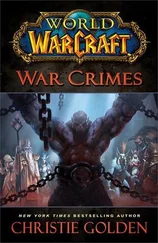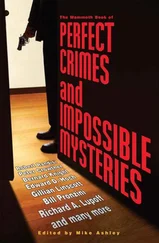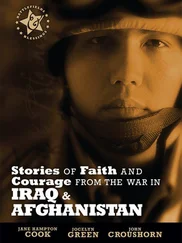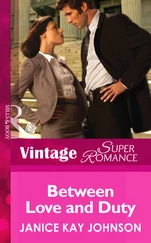Janice Anderson, Anne Williams, and Vivian Head
WAR CRIMES AND ATROCITIES
Horrific Crimes Committed Under the Guise of War
Introduction

What is a war crime? To most people, war itself is a crime, a total breakdown of the civilized process of negotiation, compromise and conciliation that normally takes place between nations or opposing parties to settle a dispute. Thus, war is by its nature a resort to brute force, to armed violence, in which ordinary, innocent people are killed, injured and have their lives disrupted. So how can it be anything but a crime?
This is a persuasive moral point, but there is also a pragmatic argument to be made: in a situation where a dispute has not been settled, and nations, states or opposing groups have already become involved in conflict, surely there is a need to lay down some rules that everyone will abide by – a need, in short, for damage limitation. And surely there are some actions that occur in times of war – such as massacres of prisoners of war and atrocities perpetrated on civilians, including children – that serve no real political purpose at all, but appear to be purely sadistic in nature and are simply an affront to human decency and dignity.
MASS MURDER AND GENOCIDE
These are the terrible crimes of mass murder, torture, rape and brutality, such as the Holocaust of World War II, the genocide of the Rwandan people, and the abuses of Saddam Hussein’s regime, that shame all of humanity. Crimes that are hard for most of us living in peacetime to explain or imagine, but that we all recognize as expressing the darkest, most destructive side of human nature. In most cases, such horrifying crimes take place in times of war, when chaos reigns and the normal, civilizing structures of social life are removed. Because of this, wars can – must – be waged in such a way as to protect human beings, both soldiers and civilians, from the worst excesses of human violence, so that war can become an exercise in disciplined military strategy, keeping casualties to a minimum, rather than an excuse for the unleashing of random acts of barbaric cruelty on a grand scale.
In modern history, each time there has been a major world conflict, there have been a series of protocols, conventions, and agreements laid down to try to learn some lessons from the situation, so as to achieve the goal of minimizing human suffering for future generations. Some might argue that this is a hopeless task, that war in itself is bound to create suffering, and to try to create laws for such a lawless situation is absurd. However, it can also be argued that the process of laying down rules for the pursuance of war is extremely important, and it is an essentially civilizing development that has done much to protect individuals in recent years. Moreover, even if nations fail, time and time again, to abide by the rules laid down, surely it is an inspiring ideal to expect all humanity to reach certain standards of basic conduct in times of war as well as times of peace?
CHEMICAL WEAPONS
The first treaty to lay down international laws of war and to establish the nature of war crimes was the 1899 First Peace Conference at The Hague in The Netherlands. Subsequently, there was another peace conference at The Hague in 1907, which expanded on the first. The Hague Convention, as the rules became known, focused on the banning of certain types of weapons that were considered particularly destructive and harmful, for example bombing from air balloons, chemical warfare (in particular the releasing of noxious gases), and hollow point bullets (that expand or flatten once in the human body). The second convention focused on how naval warfare should be conducted, and tried to establish rules at sea – for example, how mines should be laid from submarines, how prisoners of war should be treated at sea and so on.
In 1925, the Geneva Protocol augmented the Hague Convention’s list of rules by putting forward a protocol ‘for the prohibition of the use in war of asphyxiating, poisonous or other gases, and of bacteriological methods of warfare’. The protocol established a total ban on all types of chemical and biological warfare, as a response to public protests about the use of mustard gas in World War I. This noxious gas was widely used in this and other wars; exposure to it produces no immediate symptoms, but after four or more hours, the skin develops burning blisters all over the body. In high concentrations, these blisters can cause death. In addition, mustard gas can cause blindness and fatal damage to the respiratory system, as well as serious long-term effects, including cancer.
Mustard gas was first used by the Germans in World War I, and then by the British during the war. It has been used at various times since then, in contravention of the protocol, for example by Saddam Hussein against the Kurds in 1988. In 1972, the protocol was augmented by the Biological Weapons Convention, and again in 1993 by the Chemical Weapons Convention. All these amendments were designed to try to rid the world of the terrifying consequences of chemical warfare in general, not only for human beings but for the environment; sadly, in many cases, the conventions have been broken, mainly because of lack of international monitoring or effective international sanctions.
CRIMES AGAINST PEACE
A further important step in the establishing of war crimes was the Kellog-Briand Pact, also called the Pact of Paris, which was an international treaty ‘providing for the renunciation of war as an instrument of national policy’. This ambitious treaty had the aim of stopping nations from using warfare as a means of settling disputes. It was named after the American secretary of state, Frank B. Kellog, and the French foreign minister, Aristide Briand. It was initially drafted as an agreement between the USA and France, but it later became a multilateral pact, and was signed by 11 states, including the UK, Germany, Italy and others, in 1928.
However, as became clear during World War II, with the German invasion of Poland, the Italian invasion of Ethiopia (Abyssinia as it was then called) and other acts of aggression, the pact was ineffectual. Even so, many argue that it was a significant initiative, and provided a legal basis for later war crimes trials, in particular the Nuremberg Trials that took place after World War II. This was because the Kellog-Briand Pact identified the concept of the ‘crime against peace’ for the first time – that is, the act of military invasion – as a war crime. In terms of international law, the waging of a war against the integrity, independence or sovereignty of a state now became an illegal act, punishable in various ways.
This definition of state aggression as a war crime became part of the Nuremberg Principles, drafted as a set of guidelines to help prosecutors in the trials of Nazi war criminals after the war. The principles set out a relatively new idea, that a political figure acting within the legal framework of his own country could, in actual fact, violate international law through acts of aggression and violence, either towards other sovereign nations or towards political, ethnic or religious groups in his own country. In this way, the international courts were pointing out that functionaries of a totalitarian regime, such as the Nazi Third Reich, however much their actions were sanctioned by the regime at the time, and however important their position, were ultimately answerable to the international community and must be judged by absolute standards of humanitarian morality. Even in cases where an individual was ordered by superiors to pursue a particular act of aggression, if it could be proved that a person had the possibility of a moral choice, he or she could be prosecuted under international law.
Читать дальше














